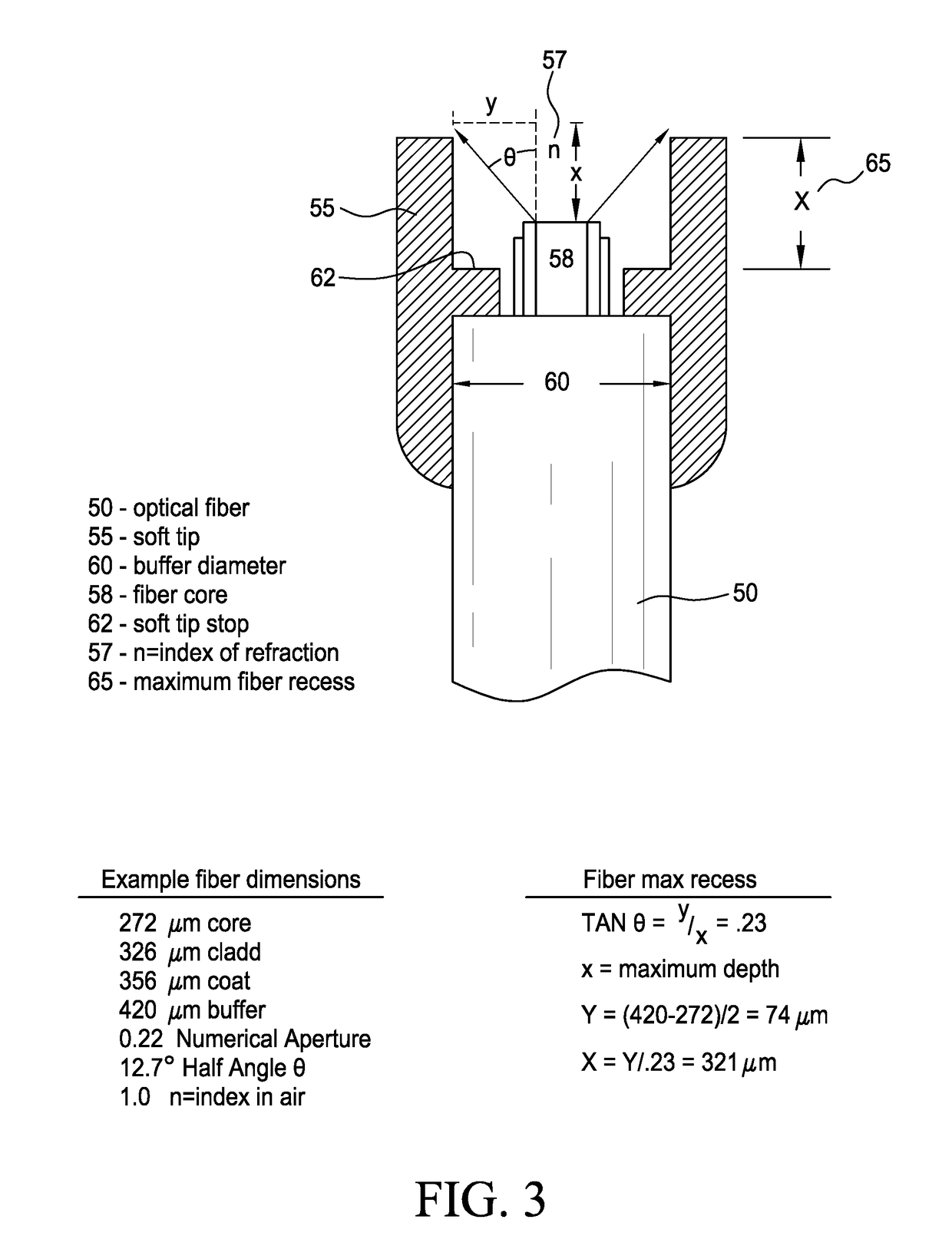One problem with current optical fibers is that when the fibers are introduced into an
endoscope, the fibers can
score or puncture the soft working channel of the endoscope.
The damage to the endoscope's working channel can be very expensive or even harmful to the patient.
However, this solution only provides protection during initial
insertion of the fiber into the scope, before the fiber is used for lasing.
In addition, the process of forming the ball tip necessitates removal of protective coatings on the fiber, and exposes the fiber to
moisture during ball formation.
The
moisture causes static fatigue and weakens the fiber, leaving it subject to breakage inside the scope, as previously reported in the FDA MAUDE REPORTS.
Although a particular problem in the context of ball tips, conventional planar fiber end faces may also be subject to
erosion.
However, while the hollow
metal tip serves as a spacer to prevent the fiber tip from touching a stone, thereby reducing
erosion, the
metal tip only exacerbates the problem of damage to the working channel of the scope, since the
metal tip will increase the risk of scoring or
puncturing the working channel, Furthermore, the use of a hard or metal tip can increase the risk of damaging delicate tissue surfaces such as the mucosa found in the
ureter, either by physically damaging the tissue surfaces or by excessive heat due to absorption of treatment
radiation by the metal tip.
However, scissors or other blades can still leave jagged edges that can damage the endoscope or introducer into which the fiber is inserted, and furthermore leaves the fiber vulnerable to peeling of the buffer, as illustrated in FIGS. 8A to 8C, in which an eroded fiber 41 having a buffer 42 and cladding 48 is
cut with scissors along a
cut line 49 to obtain a freshly
cut fiber 47 (FIG. 8B), but nevertheless is vulnerable to erosion and buffer peeling after lasing, as shown in FIG. 8C.
However, they are not suitable for urological or other applications that involve end firing lasers subject to erosion of the fiber end-face.
To the contrary, fiber tip erosion continues to be a serious problem, with effects that cannot be eliminated by spherical ball tips, hollow steel tips, or even frequent re-cleaving of the fiber tip during a
treatment procedure.
These effects include limitations on treatment energy and
fiber diameter, which in turn result in prolonged
treatment time and enhanced retro-repulsion between the laser and the stone or other object or tissue being targeted by the laser.
Still further, the use of unprotected fiber tips has led to previously unappreciated or unaddressed problems resulting from flashes that occur upon contact between the fiber tip and stones or other tissues.
One such problem is the problem of saturation of the endoscope camera as a result of the flash-induced influx of
light energy, which can temporarily cause the loss of vision of the treatment site.
However, an even more potentially serious problem is the problem of
charring caused by the energy influx, which can create weaknesses in the fiber at points located a significant distance away from the fiber tip.
When a flash occurs, a white flash enters the fiber and is absorbed by the dyed portion of the buffer, whereupon
charring can occur within seconds, causing a
weak spot in the buffer that is not easily visible through the scope but that can lead to sudden and unexpected
fiber breakage.
The
charring effect, like the saturation effect, can be alleviated by preventing contact between the fiber tip and the tissue being treated, but such contact prevention using a
bare fiber tip is difficult or impossible to achieve in practice, or is contrary to common surgical techniques.
 Login to View More
Login to View More  Login to View More
Login to View More 


